In his classic WSJ piece from 2011, Marc Andreessen declared that ‘Software is eating the world’.
Seven years hence, things are unfolding as Marc had prophesied. Industry after Industry, software is re-writing the rules of how the game is played.

Transportation has been one of the few industries that have already seen a lot of Schumpeterian “Creative Destruction”.
From being ‘Limo service for wealthy people in SF’ to ‘Ride sharing for commoners in Bangladesh’, Uber and many other software based transportation services have come a long way. Goldman Sachs estimates the ride-hailing industry ballooning to $285 billion by 2030.
A host of startups around the world are working in the transportation space with Uber, Lyft and Didi being the bigger players. The Indian Market is also seeing a lot of action in this space.

While the pure transportation market is huge, there’s an sizeable adjacent market (roughly 1/3rd the size in terms of orders) growing at a faster pace. The market in question is ‘Food Delivery’
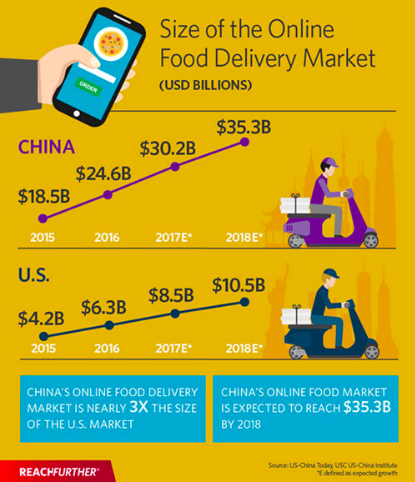

Apart from Swiggy and Zomato, there’s Foodpanda, Uber Eats and two more big players starting Food Delivery over the next 3-6 months.
Challenges for Ride-Sharing & Food Delivery Startups
Both Ride-sharing and Food Delivery startups are the epitomes of gig economy and have unlocked huge markets that were previously untapped.
However, to make some economic sense for both types of companies have to make sure that their delivery staff runs at highest utilisation possible.
But, because of the inherent nature of both ride-sharing and food delivery markets, the orders are concentrated at certain peak hours of the day.

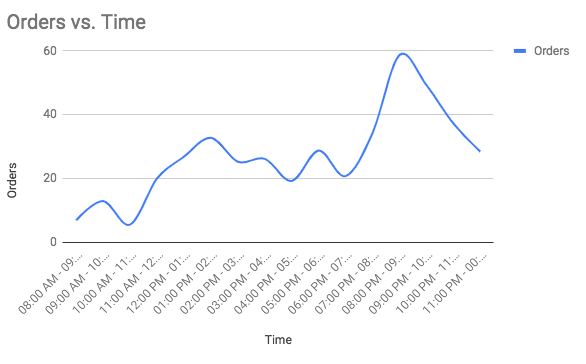
Ride Sharing Peak Hours*: 8AM – 12 PM, 5 – 9 PM
Food Delivery Peak Hours*: 12PM – 4 PM, 8 – 11 PM
*Rough Estimate
This cyclicality in demand means there are upper limits to optimisation during peak hours and there are long windows of low demand
These long windows of low demand are a huge problem as they lead to
1. Poor Unit Economics (To cover fixed costs the delivery boy should be utilised fully)
2. Weaker Driver Retention (Part time gig workers will gravitate towards a service that guarantees opportunities to earn more)
3. Scaling Challenges (Uneven/Skewed demand during certain hours makes it difficult to scale delivery ops in an optimised way)
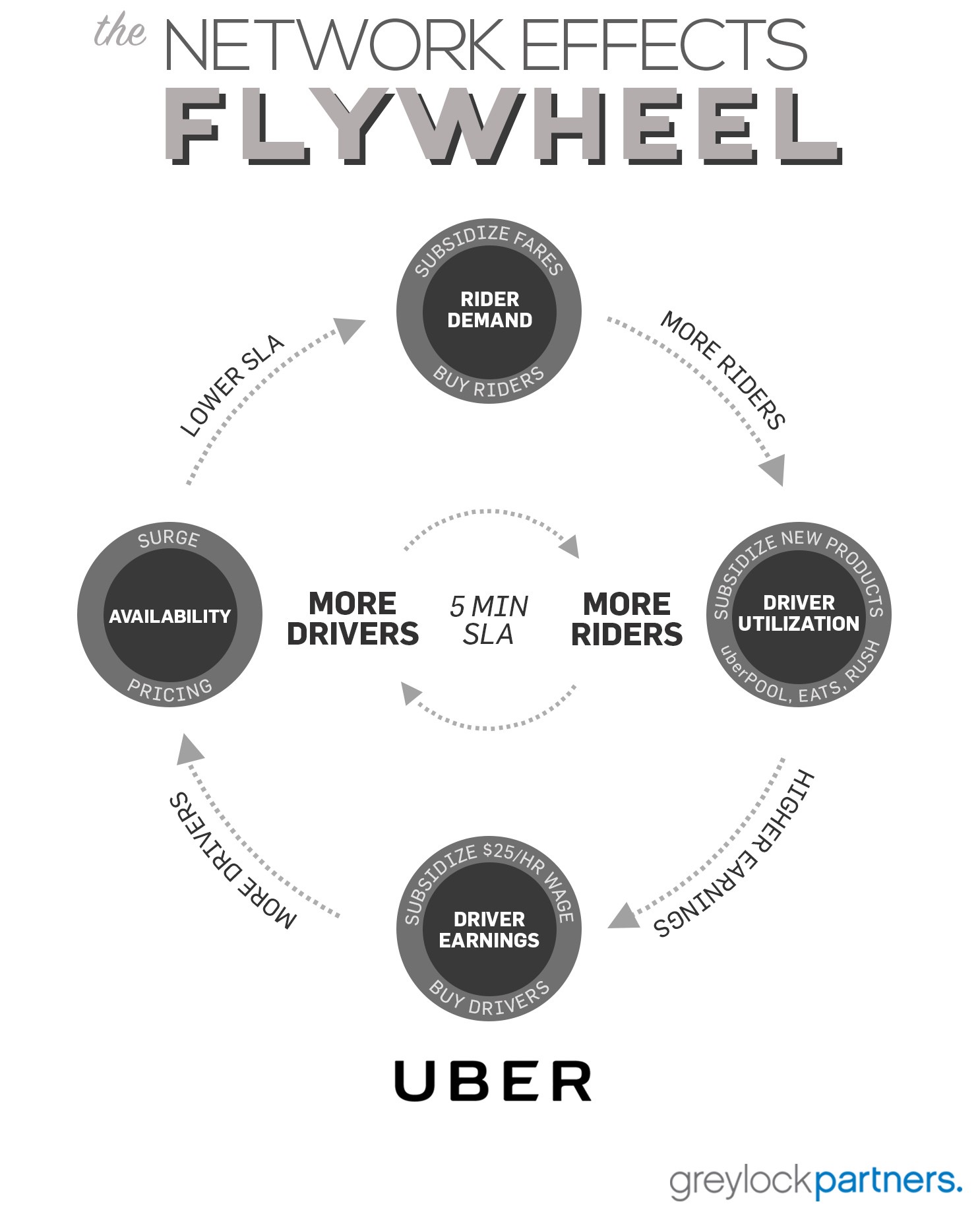
Less Demand => Poor Driver Utilisation => Poor Driver Retention => Poor Experience => Less Demand
These problems are pronounced for and particularly hurt the food delivery services, that’s also one reason why most of the ‘stand-alone food delivery’ startups found it difficult to get off the ground and ended up folding. While most startups offering logistics services in Hyperlocal/Food-Delivery space trying defeating gravity and failed, Delhivery (with benefit of hindsight) was able to identify the challenges well in-advance and did a pivot into e-commerce deliveries that offered better fleet utilisation opportunity among other benefits.
The Case for a Transportation Layer Protocol
Both Ride-Sharing and Food-Delivery startups not only share common challenges around fleet capacity utilisation, they also to varying degree share some strengths
- Huge Captive Customer Base
- Network of Drivers across cities
- Scalable Technology Stack for Managing Logistics
- Proprietary Data about People, Businesses, Routes, Traffic etc
- Operations Infrastructure
Protocol: A set of rules and guidelines for communicating data

The Internet Protocol Stack enabled various web applications to be built on top of it and a handful of them grew up to become today’s Internet Giants (Facebook, Google, Amazon).
Just like the internet protocol layer enabled various apps to be built for the web, we can see a bunch of startups trying to build what can be called ‘Transportation Layer Protocol’ or ‘Transportation Layer’

The Transportation Layer implies having a base infrastructure to build various consumer (B2C) or business (B2B) offerings on.
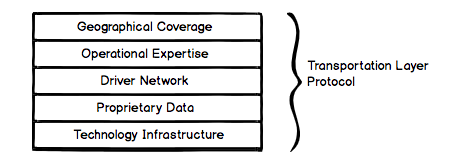
Most companies in this space end up building different variants of Transportation Layer Infra for internal consumption. But to leverage it and attain a dominant market position (with a sustainable business model) the startups should/would try to become the ‘Transportation Layer’ for the country.

Ekart Way*: Just like Flipkart’s logistics arm also handles logistics for other companies such as Adidas, in future some of the B2C companies discussed here might also start doing deliveries for other restaurants (managing the delivery orders a restaurant gets directly).
A startup can run multiple lines of businesses on top of the common infrastructure & generate adequate customer demand for their offerings
— A Successful Transportation Layer at Play
Becoming the default app for any transportation related services is the ‘Holy Grail’ as you get both more transactions and revenue per user and it costs you less to service each request. Also, the bigger you become the network effects ensure that less likely you are to get displaced.
This, I believe is what’s unfolding in India and startups from both sides (ride-sharing and food-delivery) are vying to become the ‘Transportation Layer’ to services various consumer offerings.

Expansion to Adjacent Markets:
- Ride sharing Startups – Both Uber and Ola (Foodpanda) have been doing food delivery for around an year now.
- Food Delivery Startups – Swiggy has shared their plans of expanding into Grocery and Medicine Delivery.
- Grocery & Medicine Delivery Startups – I Don’t think the grocery delivery startups have shared any plans for other categories.
- Concierge Startups – Dunzo, has started doing bike taxis, food delivery and grocery

The image above you should give you some sense of what the fruits of becoming the default transportation/logistics layer would look like with different B2C/B2B offerings stacking up atop shared demand and infra.
However, while getting there might be possible it’s gonna be incredibly difficult. Moreover, despite the number of startups aiming, only a few market players are strongly positioned to get a good crack at it. I’ll try to explore more in another post
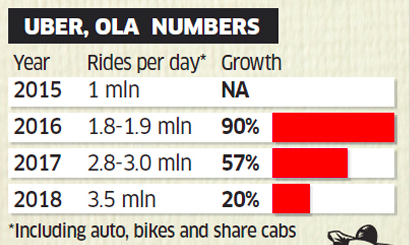


Pingback: The OTT Play in India - All Things Startup
Pingback: The Rise of India's Super "Food" Apps - All Things Startup